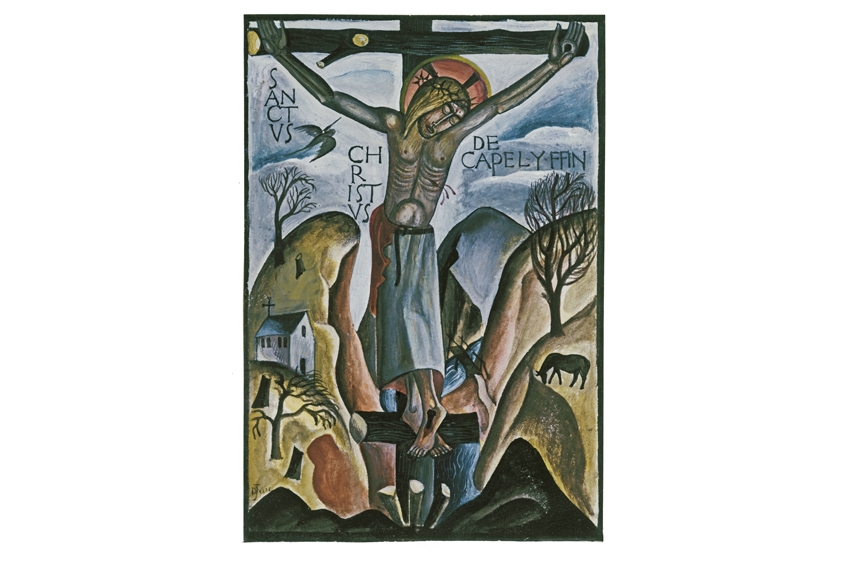As the focus for an Easter meditation, David Jones’s ‘Sanctus Christus de Capel-y-ffin’ (1925), a small, heartfelt painting in gouache on paper, could scarcely be bettered. The Crucifixion takes place in a luminous landscape with the bird of hope in attendance. This is the world of medieval illuminated manuscripts and ivory carvings, a highly sophisticated spiritualised and classicised vision of existence that is sometimes dismissed as primitive. A Welsh hill pony is set off against a chapel, trees and a bridge over running water in an arabesque design quivering with natural and spiritual life. Rhythm is crucial. As Jones said, ‘I don’t care how static the subject is, but it must be fluid in some way.’ He recognised the strong rhythms of the Welsh hills and the counter rhythms of the brooks, and made of them a new unity, a new beauty.
David Jones believed that the artist’s primary function was as a ‘rememberer’. In 1959 he wrote: ‘My view is that all artists, whether they know it or not, whether they would repudiate the notion or not, are in fact “showers forth” of things which tend to be impoverished, or misconceived, or altogether lost or wilfully set aside in the preoccupations of our present intense technological phase, but which, nonetheless, belong to man.’
Myth and religion were two of the things he strove through his art to elucidate to the contemporary mind. He was lucky to have been born at a time of late flowering in Catholic culture: not only were the writers G.K. Chesterton, Hilaire Belloc, Evelyn Waugh and Graham Greene superbly active, but Eric Gill and his circle of artists were Jones’s intimate friends, while the spiritual overseers included that notable Jesuit Father Martin D’Arcy, together with Douglas Woodruff and Tom Burns, successive editors of the influential Catholic weekly The Tablet.







Comments
Join the debate for just £1 a month
Be part of the conversation with other Spectator readers by getting your first three months for £3.
UNLOCK ACCESS Just £1 a monthAlready a subscriber? Log in